© Use of content without authorization is prohibited
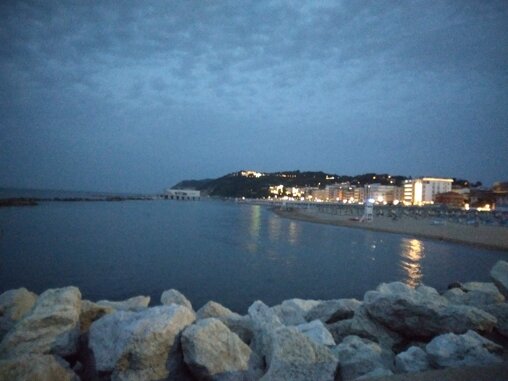
Marche
Ancona Ascoli Piceno Fermo Macerata Pesaro and Urbino
I lived in this land for six years of my childhood, and even during the rest of my life I often returned, because here I always found new places to discover. Starting from the hills of Montefeltro, up and down the Apennine mountains catching scents of Tuscany and Umbria up to the wild Sibillini mountains, and finally returning to the hills dear to Leopardi in a circuit of unspoiled nature. The coast has something for everyone: low and sandy in the north and south of the region, rocky in the center with spectacular coves on the Conero Riviera. Dozens of medieval villages with castles, abbeys, churches like the Sanctuary of Loreto to enrich my culture. To finish, the food: as a starter I would begin with Olive Ascolane di Mare; for the first course, a baked pasta from Macerata called Vincisgrassi; as a second course, Stoccafisso all’Anconetana, all accompanied by a red wine like Sangiovese or a white wine like Verdicchio di Jesi.
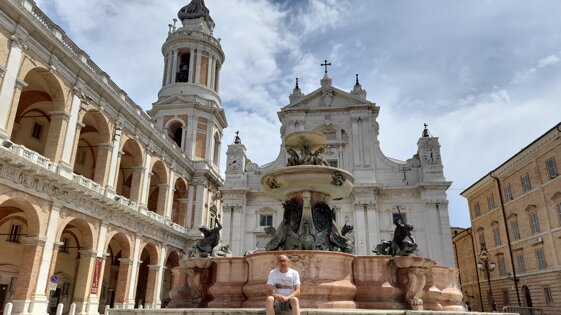
Province of Ancona
Area: 1963.06 km² Population: 461,966 Municipalities: 47
Loreto: Piazza della Madonna
Loreto: Piazza della Madonna
Travel photos...



Loreto
Corinaldo
Senigallia
The Holy House inside the Sanctuary
Via la Piaggia better known as "The Staircase"
The Rotonda a Mare
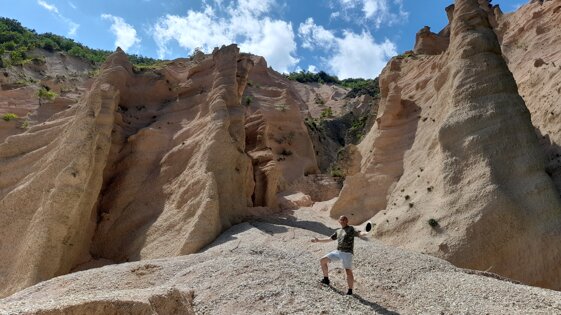
Province of Macerata
Area: 2780.80 km² Population: 303,510 Municipalities: 55
The "Lame Rosse", the Grand Canyon of the Sibillini Mountains
The "Lame Rosse", the Grand Canyon of the Sibillini Mountains
Travel photos...
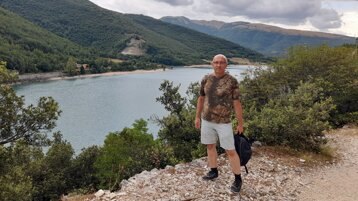
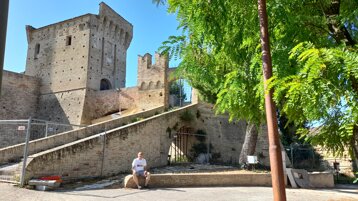
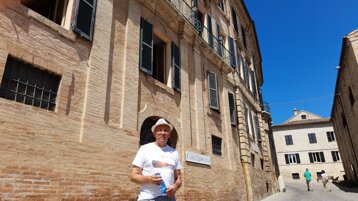
Lake Fiastra
Montefiore
Recanati
Artificial lake located within the Sibillini Mountains
Renaissance Castle
Birthplace of Giacomo Leopardi

Province of Pesaro and Urbino
Area: 2509.86 km² Population: 350,335 Municipalities: 50
Carpegna: Romanesque Parish Church of San Giovanni Battista
Carpegna: Romanesque Parish Church of St. John the Baptist
travel stories...
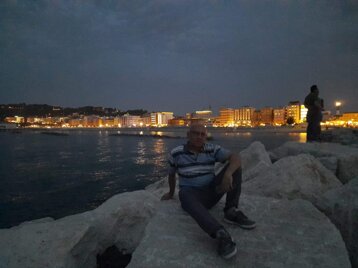
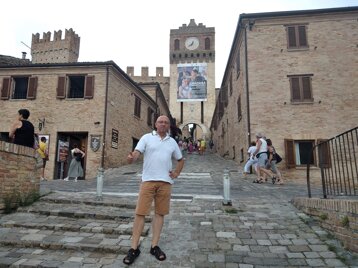
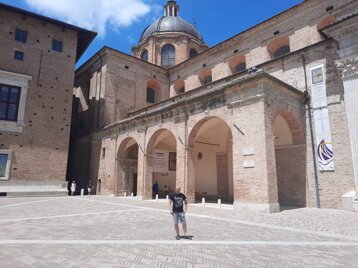
Gabicce Mare
Gradara Castle
Urbino
Three days in this holiday resort, which rightly, unlike many towns in Montefeltro, has resisted the sirens of Romagna and has remained part of the Marche. During the day, the town does not have any particular sights to visit; only the large sandy beach, which is entirely occupied by beach clubs; the small and pretty free beach is far from the center, in the northern part of the town. When evening falls, the lights along the seafront enliven the place, which still maintains a peaceful atmosphere. I cross the pedestrian bridge over the Tavollo river, where I find a small restaurant by the sea and have dinner with my feet in the sand. Later, a mint granita refreshes me while the little train passes along the avenue, shuttling between the coastal area and the mountain village. I walk on the pier up to the Red Lighthouse; on the way back, I sit on the white rocks to enjoy the breeze coming from the sea; behind me, the lights of the night illuminate Gabicce.
This castle, once belonging to the noble Malatesta family from Rimini, is famous for a canto from the Divine Comedy that tells the story of Paolo and Francesca, who saw their love blossom in the rooms of this fortress and here met their death at the hands of her husband. Luckily finding free parking near the manor, I climb up a steep road to the entrance of the fortified citadel. After reaching the first city wall, I enter the village by passing under the Clock Gate. The street is dotted with inns, workshops, and shops that, in their names or the products they sell, recall the two unfortunate lovers. It's pleasant to browse in search of a little souvenir to take home, even if all this commerce somewhat clashes with the romanticism of the place. I reach a second gate that gives access to the Fortress and the chance to walk on the mighty walls, all after paying an entrance fee. A girl with a beautiful Eurasian Eagle-Owl on her arm announces a falconry show. I leave this place intending to return, perhaps in sweet company; in the evening with the fortress illuminated.
On one of my trips through the Marche hills, I stopped in this city. Coming from Fermigliano, I skirt the mighty walls and conveniently park on Via Matteotti at the foot of the historic center. I climb up the steep Via Saffi; an evocative porphyry ascent among old houses with exposed bricks. Along the way, the faculties of one of Italy's most prestigious universities follow one another. At the top, the road levels out and widens to make room for ancient palaces; I am in Piazza Rinascimento: in the center, the Egyptian Obelisk; to my right, the Gothic Church of San Domenico; to the left, the Ducal Palace, the ancient residence of Federico da Montefeltro, now home to the National Gallery of the Marche. After a visit to the Cathedral, I find shelter from the heat by resting on the steps in front of the Duomo Cave. I resume my walk; the streets are teeming with university students who seem to outnumber the inhabitants of Urbino. In a souvenir shop, I pick up the usual souvenir t-shirt. I end my visit in front of Raphael's birthplace, a symbol of this Renaissance city.